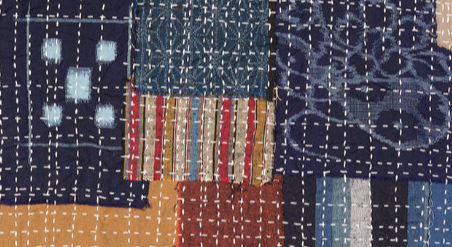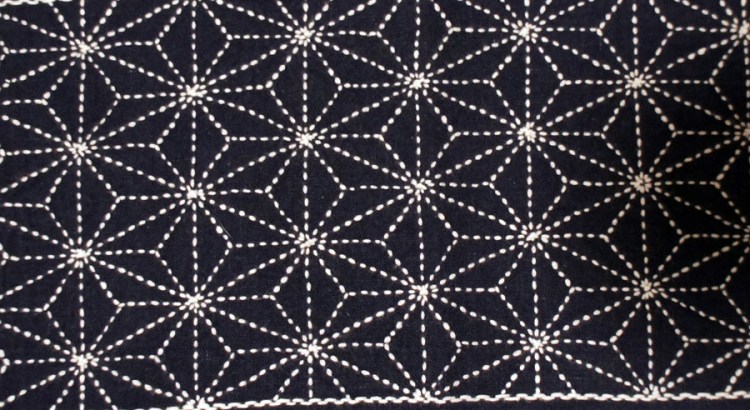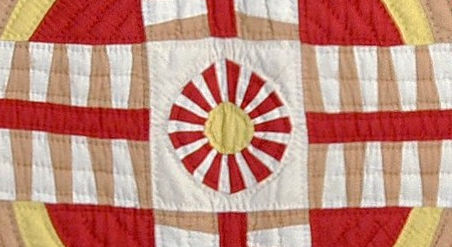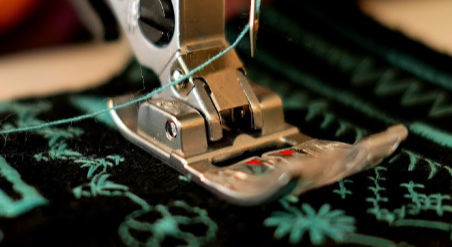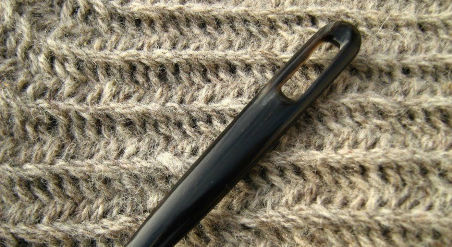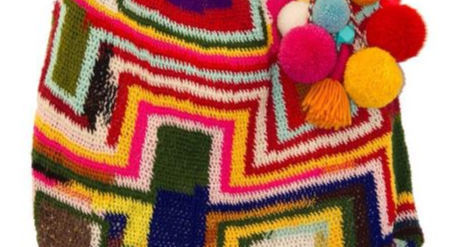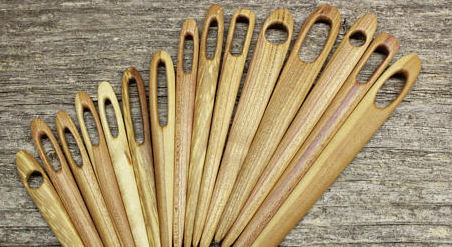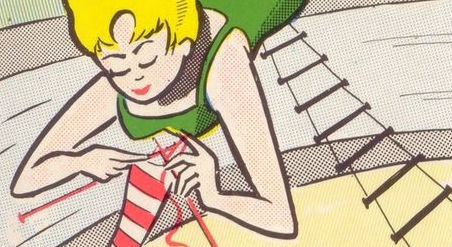Sashiko Stitching
Sashiko (pronounced shash-ko) is a Japanese technique of needlework quilting stitchery which has endured through the centuries, beginning in the Edo Era (early modern Feudal Society) of 1615-1868.
The stitching technique is an artful way to decorate and sustain fabric which needs to be repaired in order to continue to be useful. Sashiko, meaning ‘pierce, or stab,’ are simple running stitches made using undyed threads.
Sashiko originated as a darning technique for mending and reinforcing boro clothing, among Japan's working class poor in the countryside. Japanese farmers' clothes and household items were made of dark indigo cloth – homespun and handwoven linen, hemp, and ramie.
As the cloth on a piece of clothing wore out, new pieces of cloth were added with stab stitches. Durability of fabric was of the essence – fabric had to last as long as possible, and was repurposed as needed in order to keep using it until it was totally worn out and unable to be stitched back into usefulness.
"Beyond the warmth and protection provided by the garments, the patterns embroidered onto the blue cloth where also believed to offer spiritual protection to the wearer:
- Designs placed around the hem of a garment, its sleeve openings and the neckline were believed to prevent evil spirits from entering the human body.
- Kimonos for babies had stitching applied to the back neckline as a talisman and to safeguard a vulnerable area.
- Vulnerable parts of the body were protected by small stitched symbols hidden in the inside of the garment.
- The cross-over of stitches, called 'me' (目) in Japanese and meaning 'eye' in English, were believed to have strong protective powers. Some patterns had thousands of cross over stitches."
Working Class Sashiko by Pamela Ravasio via Hand/Eye Magazine
Layer upon layer of fabric and stitches made a piece of clothing warmer and more stable. The undyed stitches were not sewn randomly - they were sewn in straight lines or shapes which made distinctively decorative patterns.
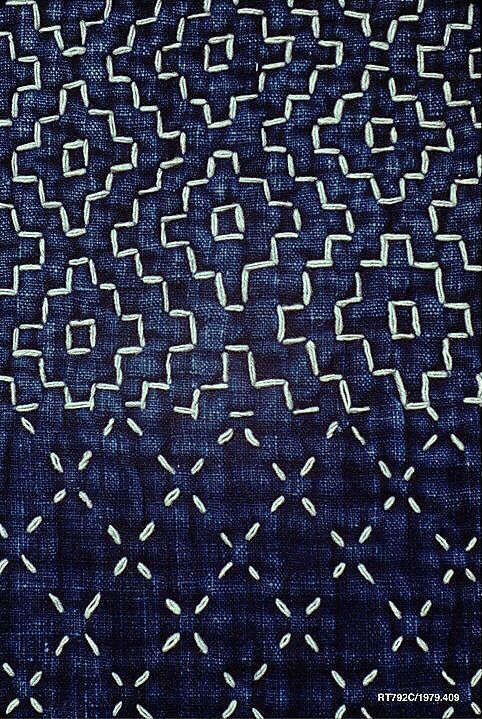
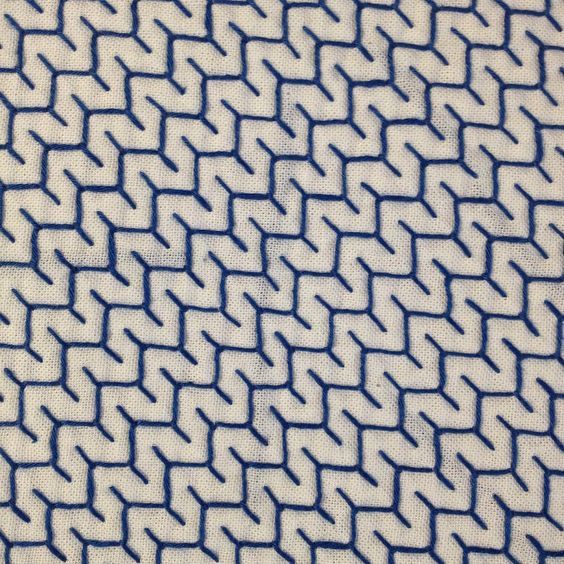
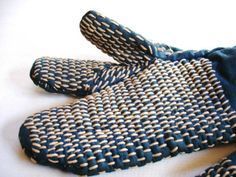
As a larger piece of clothing wore down to the point of no longer being salvageable with sashiko stitching, it would be repurposed into smaller useable items.
Work jackets and half jackets were repurposed as shoe insoles, floor cushions, quilts, bedcovers, futon covers, drawstring bags, rice bags, door curtains, and cleaning cloths. This repurposing and non-wastefulness comes from the idea of "mottainai," meaning "too good to waste."
Some sashiko-stitched clothes and household items have been passed down for generations, sometimes within the same family.
Thrift and sustainability in maintaining home textiles transposed into an aesthetic that is appreciated and celebrated today.
“By the 1950s, increased prosperity and the introduction of man-made fibres began to change the way country people dressed, and sashiko declined. Old, worn sashiko garments were not always valued and many were thrown away. Modern redevelopment has taken a toll on the old kura (family storehouses) where sashika were stored, as have fires and earthquakes.
Fortunately, the respect for old cloth led some people to carefully preserve old sashiko and other textiles, which re now prized by museums and collectors as examples of mingei (folk art).
A sashiko revival began in the 1970s, parallel to the rise in Western quilting in Japan. As the role of sashiko as a frugal necessity has disappeared, people are appreciating stitching sashiko for its creative, relaxing and even therapeutic qualities. In the 21st century, sashiko continues to evolve.”
The Ultimate Sashko Sourcebook by Susan Briscoe
Getting Started with Sashiko
If you like the look of sashiko stitches, grab your worn-out items and stitch some visible life back into them.
Add patterned stitches to jeans or pants, skirt, dress, quilt, coat, scarf, bag, pillowcase, shirt, hat, gloves or mittens. Head over to Pinterest and look at examples of visible stitching to find one you’d like to emulate.
A good sashiko tutorial can be found at Upcycle Stitches. Our curated selection of excellent video tutorials can be found at Sashiko Videos. If you'd like to try sashiko stitching on a gorgeous boro patchwork project, check out How to Make a Boro Bag.
What you need
Below is a list of items that will help you get started. Click through to see the items on Amazon. [As an Amazon Associate I earn from qualifying purchases (at no extra cost to you).]
- Fabric or clothing for your sashiko stitching project
- Olympus Sashiko thread
- Sashiko needles or a pack of embroidery needles (sizes 3-9)
- Small embroidery scissors
- Pins
- Thread
- Japanese Hera fabric Marking tool
- Metal or leather thimble
- Ruler
- Sewing clamp or embroidery hoop
Some More Thoughts
Today, examples of sashiko are preserved in museums, and the technique is celebrated and appropriated by designers, including Louis Vuitton, Hiroyuki Horihata, Makiko Sekiguchi, Joseph Altuzarra, and Junya Watanabe.
Fortunately for us, ethnologist and author Chuzaboro Tanaka amassed a collection of boro clothing which is now permanently housed in Tokyo’s Textile Culture and Ukiyo-e Art Museum – Amuse Museum. Click on the Museum link to check out their collection.
If you’d like to read a short history of clothes worn by different classes in Japan, read Japanese Textiles of Daily Life by Iwao Nagasaki Tokyo National Museum.
And, to read more about the history of sashiko and various sashiko stitches, we highly recommend The Ultimate Sashiko Sourcebook by Susan Briscoe.
Below are some best selling books on sashiko. Click on a book cover thumbnail photo or button for more information on Amazon.
For more curated books and crafting supply suggestions, explore our Crafting Resources, The Brooklyn Refinery Shop, and our Materials Source List.
Sashiko Stitching was published by thebrooklynrefinery.com April, 2018.
POPULAR POSTS
Follow a tutorial for making a patchworked bag with Sashiko topstitching. | Follow tutorials for how to create traditional Japanese embroidery stitching. | Explore a library's digitized vintage maps, which you can download for free. | Learn from a museum textile curator how to best care for your quilts. |
Learn to make a basket weave pattern quilt from scraps of fabric. | Sisters Lorna and Jill Watt create amazing yarn bomb installations . | Ceramic artists create fantastical structures using magnetic clay. | Learn about a Viking fabric-making technique which pre-dates knitting. |
Follow a tutorial for making a bilum bag - PNG's traditional fabric. | Learn to make a pinhole camera; develop paper film with common items. | Learn about a stretchy fabric made with connected loops. | Free digitized knitting magazines 1800 - now. |














